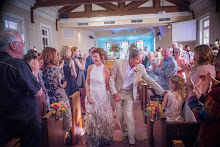Monday, August 7: What is the Feldenkrais Method®
WHAT IS THE FELDENKRAIS METHOD®?
Well, for starters, it’s something that some group wants you to put a ® on the first time you mention it. So, consider that done.
The Feldenkrais Method is the body of work and ideas and group and individual practices that stem from the original insights and discoveries of a man named Moshe Feldenkrais, who lived from 1904 until 1984. He walked out of what is now Poland when he was fourteen with a few friends and journeyed to Palestine. He made his way there as a laborer and a tutor as he got various degrees going to night school. He loved sports and learning and ended up in Paris, working with Frederic Joliot-Curie at the Radium Institute, while studying for his doctorate of science degree.
In Paris he met Jigaro Kano, the founder of Judo, who authorized Feldenkrais to be the first European authorized to bring Judo to Europeans. Moshe Feldenkrais liked mind stuff and body stuff and when his knees went bad on him and the doctors of the time said that an operation could have a 50% chance of leaving him crippled, he said he could flip a coin for those odds and set about discovering how to heal himself.
He applied anatomy and what he could observe in the best learners in the world: babies. He used concepts from Judo and his own discoveries and applied scientific thinking and experimentation and came up with a system that improved not only his knees but his whole level of organization. He discovered that his system could help people who'd just had a stroke, children with cerebral palsy, accident victims, as well as high level musicians and artists and athletes. He realized that the problems we have in sore backs or necks or in wanting to improve our yoga or our running, as well as many general problems of being stuck in our thinking and emotional habits and not so vigorous health, were the result of habits stuck in a lack of system wide organization and understanding.
What does that mean?
It means if you want to look behind you while you are driving a car and just move your neck, it will probably hurt your neck. If you let and encourage your ribs and spine and pelvis and eyes to join the party, you’ll turn farther and easier and won’t hurt yourself.
It also means that if you do processes like those in the July 31 essay ( Smarter, Easier Neck), where you go slow to increase awareness and learning and “DIFFERENTIATE” movements ( in that case by having the arm/shoulder go one way and your head the other and also your eyes one way and your nose/head the other), you give the brain a chance to re-remember how your body/mind is really set up. This learning is the key to improved performance.
His method is about learning and improving by less effort, less speed, more awareness and more experimentation.
His lessons can be of a group nature, and therein they are usually called Awareness Through Movement® lessons, though some places they are called Transformational Movement Lessons. His lessons can also be one on one, and there they are called either Functional Integration® or Functional Synthesis. Whatever they are called, they are lessons, not treatments, and the process is one of discovery, going inside, connecting to one’s awareness and learning and sense of self.
The private lessons can feel like heaven, and they are great for changing sore backs, or improving tennis, or recovering from accidents, or increasing health and awareness and vitality. The group lessons are often playful and allow people to experience movement in a way they haven’t felt since they were children. As in private lessons, they are great for recovery, discovering, improvement and becoming a more present person, comfortable and happy in your body.






0 Comments:
Post a Comment
Subscribe to Post Comments [Atom]
<< Home